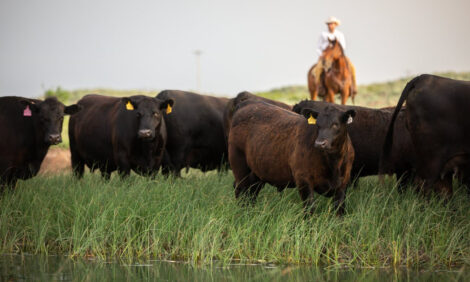



Genetic testing for cattle and dairy herd improvement
Thermo Fisher Scientific explains the value of genetic testing for cattle breeding using genetic selection, phenotype selection, and parentage testingGenetic testing technology is advancing rapidly. Tools such as the AgriSeq targeted solutions from the Thermo Fisher Scientific agrigenomics portfolio accelerate genomic breeding decisions by offering high-throughput accurate data on individual animal value. Breeders and producers can capitalize on these advances by focusing on specific herd needs to select economically relevant traits (ERTs) to improve animal value and profitability.
Genomic breeding programs use a variety of approaches to determine animal value. All rely on identifying molecular markers that predict or associate with a particular trait or phenotype. Tests using SNP (single nucleotide polymorphism) detection, which identify genetic variations that associate with conditions such as coat color, double muscling or disease, are increasingly popular due to their speed. It is possible to process 100s of samples for 1,000s of SNPs in a single sequencing run, getting results within a few days.
There are three main areas where genetic testing is valuable in cattle breeding:
- Genetic selection for high-value production traits
- Phenotype selection, for consumer preference or disease avoidance
- Parentage testing for animal identification and herd management
Genetic Selection
Genetic selection relies on identifying traits associated with ERTs and also expected progeny differences (EPDs) that improve animal value, for both breeding potential and production. Selecting sires for a dairy herd, for example, might concentrate on daughter value traits such as milk production. Molecular markers for larger scrotal circumference in the sire predict earlier puberty in daughters. In beef production, traits such as mature weight and higher and more efficient feed conversion rates are more desirable.
Using genetic selection tools wisely can increase herd profitability. Being able to identify animals that have better milk production, weaning weight and muscle characteristics for example will breed a better end product for market.
However, in order to move a herd forward, producers must take care to select traits that improve profitability rather than increase costs. Selecting rapid growth or high milk yield for example will not optimize production where nutrient or forage quality is a limiting factor. Considering herd goals within environmental and husbandry constraints will maximize benefits and avoid obstacles to achieving full performance potential.
Trait Testing for Phenotype Selection
Molecular markers that associate with certain phenotypes can be useful for predicting production assets (fat marbling within muscle), cosmetic factors (red or black coat for consumer preference) and disease susceptibility (enzyme defects sech as a-mannosidase deficiency in Angus beasts).
Since some conditions are inherited in a recessive manner, it is important for breeders to identify heterozygote individuals as carriers within a herd or breeding environment. These can include cosmetic traits such as coat color, and more harmful mutations that cause disease or deformity.
Cosmetic phenotypes can have impact under certain husbandry systems. For example, cattle with albinism experience increased photosensitivity, with white faced animals also seeing increased risk of skin disease including cancer around the eyes. Hereford and similar breeders may select animals with ‘goggles’—darker hair color and pigment around the eyes—although the genetics of this phenotype are not fully determined.
Some markers for a visible phenotype are also good indicators for a hidden malformation; an example of this is white heifer disease where white coat color in Belgian Blue and Shorthorn animals associate with failure of the female reproductive tract to develop fully. Affected animals are usually sterile; since this isn’t apparent externally or easy to spot under some herd management systems, it can be a cause of overall herd subfertility.
Parentage Testing
Parentage testing relies on genomic evaluation using SNPs or other molecular markers to rule out individuals based on simple inheritance.
Under certain management situations, parentage might not be immediately obvious. Genetic evaluation of offspring against all possible parents can establish whether the calf is the result of AI or natural service under certain herd management systems. This is also a useful tool where service is not observed by the producer, in situations where multiple bulls free run with the herd.
Genetic testing is also valuable in establishing pedigree for valuable animals pre- and post-sale, to confirm identity. It can also be used by producers to confirm embryo transfer offspring.
Find out more about solutions for genomic breeding programs from Thermo Fisher Scientific Agrigenomics
If you’d like to learn how these tools can help your breeding program, sign up for a free consultation with one of our experts.
For Research Use Only. Not for use in diagnostic procedures.



